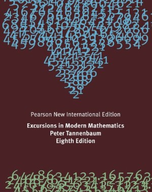Solution Found!
An election with five candidates (A, B, C, D, and E) is decided using the method of
Chapter 1, Problem 49(choose chapter or problem)
An election with five candidates (A, B, C, D, and E) is decided using the method of pairwise comparisons. If B loses two pairwise comparisons, C loses one, D loses one and ties one, and E loses two and ties one, (a) find how many pairwise comparisons A loses. (b) find the winner of the election.
Questions & Answers
QUESTION:
An election with five candidates (A, B, C, D, and E) is decided using the method of pairwise comparisons. If B loses two pairwise comparisons, C loses one, D loses one and ties one, and E loses two and ties one, (a) find how many pairwise comparisons A loses. (b) find the winner of the election.
ANSWER:Step 1 of 2
Given,
loses 2 comparisons.
loses 1 comparison.
loses 1 comparison and have a tie.
loses 2 comparisons and have a tie.
We know, each candidate will have 4 comparisons, therefore total points are:
